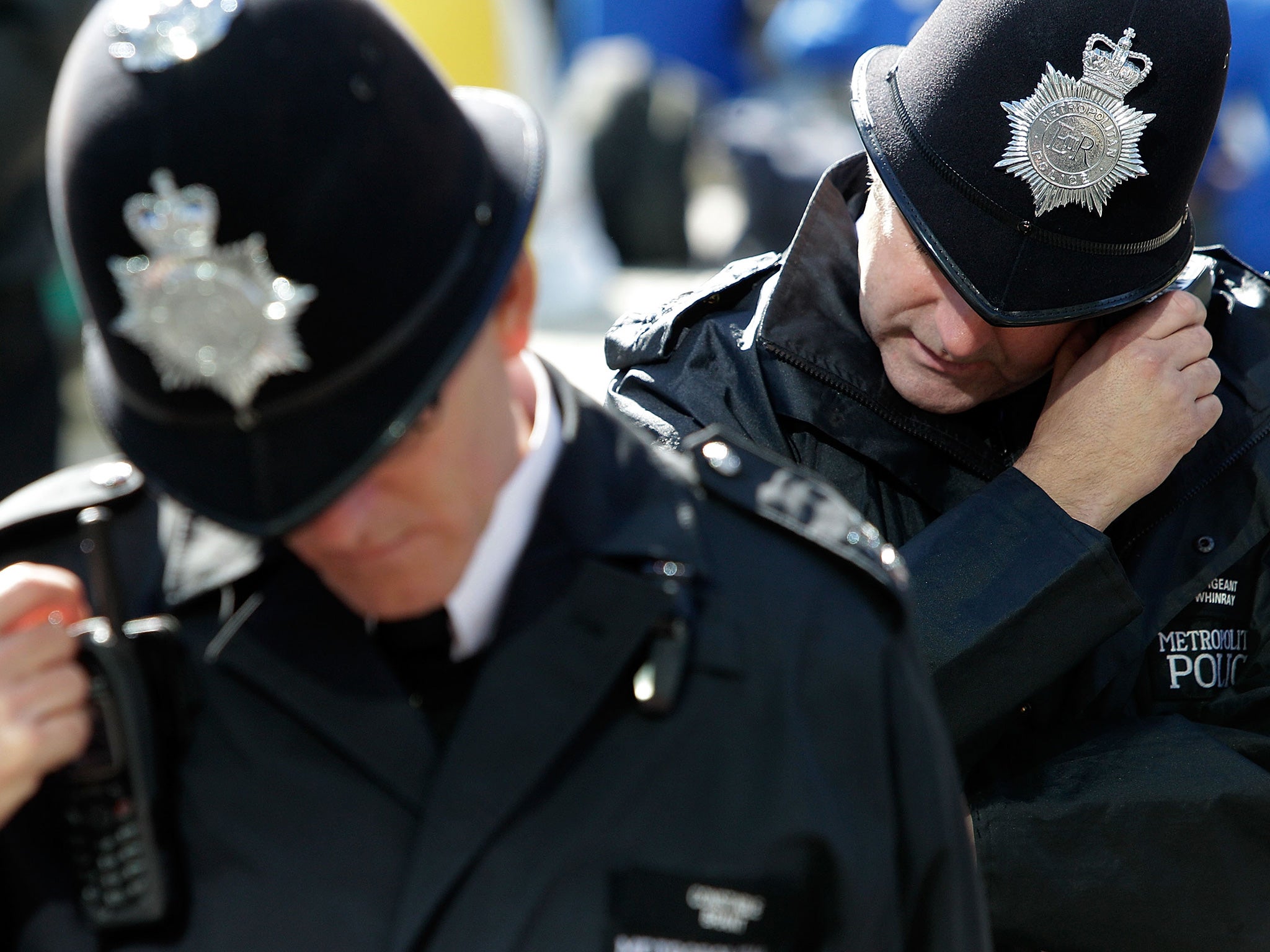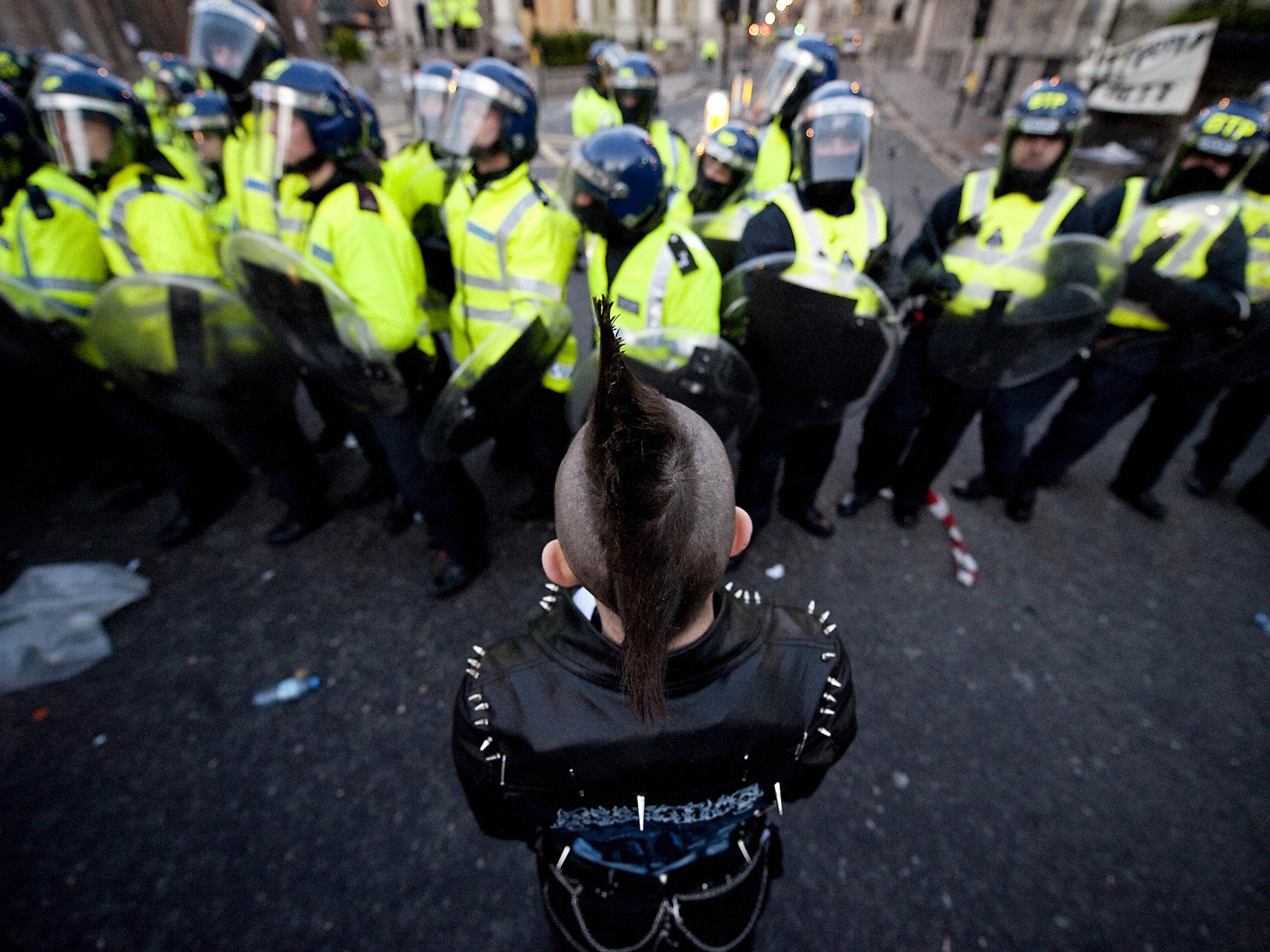Campaigners accuse Met Police and mental health trust of racist cover-up
Exclusive: Charity demands full report into use of police in riot gear in hospital ward disturbance

A mental health trust and the Metropolitan Police have been accused of trying to cover up alleged racism towards patients during an extraordinary night when 48 officers – some in riot gear – were deployed to deal with disturbances in a ward of vulnerable adults.
Campaigners have spent three years trying to uncover what happened at the River House facility at Bethlem Royal Hospital, part of the South London and Maudsley NHS Foundation Trust, on 1 October 2012.
Several days of disturbances escalated into a riot, the ringleaders of which were four patients, three black and one white. They had placed staff under siege which required police intervention before control could be regained.
The Met sent in 48 officers, including armed and dog units. More than 20 officers entered the ward including several Tactical Support Group (TSG) officers in “strict, compact riot formation” armed with Tasers, shields, visors and batons.

An independent report into the disturbances commissioned by the trust said: “According to staff statements, the police, after entering the unit, ignored the request of staff to treat Patient C (a white patient) the same way as they had treated the three black patients.
“Staff state that the police made no attempt to coordinate their actions with [hospital] staff as is standard practice during a siege, to gain information and to help them plan their strategy in order to minimise disruption to the unit.”
Police, assisted by hospital staff, escorted the three black patients (Patients A, B and D) to solitary confinement, handcuffing two of them. Officers also placed a clear plastic cover over Patient B’s head preventing him from moving his head and shoulders. “He was initially ignored by police until several promptings by staff,” the trust report said.
Patient C, the only white patient of the four, was not handcuffed and allowed to stay in the television lounge despite staff insisting to police he was also “a significant player in the disturbance” and that being left on the ward could lead to another disturbance – which it did.
Immediately after police left, around 3am, another patient, E, demanded an explanation as to why Patient C had remained on the ward. The report said: “Patient E believed that there was a racial motive which led to staff assisting the police to place three black patients in supervised confinement, while a white patient was treated more favourably.”
Eleven officers returned and “dealt with the situation promptly”. By 5am full control was restored.
A 111-page report was completed in May 2013 and a summary published that August. An “unreadable” version was only made public in May 2014 following Freedom of Information requests made by David Mery on behalf of the charity Black Mental Health UK. Almost all the allegations of racism and the patients’ ethnicity had been censored.
Mr Mery appealed and the trust was forced to publish the report again earlier this year detailing the accusations of racism as well as Scotland Yard’s refusal to engage with hospital staff. Around 30 pages remain completely redacted.
A paragraph initially redacted said: “It took eight weeks to secure material from the Metropolitan Police. Requests for further and better particulars have been unsuccessful, despite reminders on matters which were explored at interview with an inspector from Bromley borough police.”
Mental health campaigners say it was only luck that prevented staff or patients being injured that night.
The Met Police had previously been heavily criticised for their actions at the same hospital in September 2010. Then, Olaseni Lewis, a 23-year-old Kingston University postgraduate student, died after being forcibly restrained by up to 11 officers while seeking help as a voluntary patient. Five years on his family are still waiting to hear when an inquest into his death will be held.
Addressing the 2012 incident, Mr Mery told The Independent: “The cover up, with the trust releasing conflicting statements and deliberately attempting to avoid the release of its investigation report (and still refusing to name its authors), and the Metropolitan Police losing its own report, demonstrate that neither organisation is keen to take responsibility for what happen and ensure that it won’t happen again.
“Surprisingly, there doesn’t appear to have been a specific investigation into the racist behaviour described in the report. NHS trusts and police forces should have an obligation to publish reports into serious incidents publicly, promptly and in their entirety. However, the police have lost the incident management log for what they have classified as a critical incident.”
The police have said they were concerned that the staff on the ward that night were unaware of any contingency plan other than to call them on such an occasion. Operation Metallah, a new way of the Met to work with the mental health trust, was launched a few months later.
Mr Mery said: “The tactics that resulted in the deployment at a mental health unit of armed officers, dog units, and TSG officers with Tasers drawn are clearly wrong. Such tactics cause distress to the vulnerable individuals housed there. The apparently racist behaviour of TSG officers involved is unacceptable.
“It is lucky this time no one died or was seriously injured. Olaseni Lewis and Sean Rigg [whose death in police custody in Brixton, south London, in 2008 led to widespread campaigns on how officers treat suspects with mental health issues] were not so lucky.”
A trust spokeswoman said the report had been redacted on legal advice “for reasons of patient and public safety, and patient confidentiality… to maintain security arrangements used in a forensic mental health facility and to protect patient and public safety”.
She said: “The report published on the trust website provides a clear and independent account of what happened on 1 October 2012. The trust’s intention was to publish the report in the interests of transparency while using the correct application of the FoI Act to ensure that the identity of patients and their security was not compromised.
“Following the investigation in 2013, the trust has taken action to address all recommendations made in the report to prevent a similar incident recurring.
A Met spokeswoman said: “The location is known to officers as housing high-risk mental health patients. There was a serious threat to staff safety, and some patients, whose medical history was not known to officers, were unsupervised and believed armed with furniture and access to a kitchen area containing knives.”
She said the response was based on “using the widest range of resources available during a highly charged incident by deploying resources appropriate to bring the situation under control, while ensuring the safety of staff and patients. The Metropolitan Police Service has received no complaint in relation to the incident. Should any complaint be received it would be thoroughly investigated.”
She added that since the May 2013 publication of Lord Adebowale’s report into how the Met responds to mental health incidents: “The MPS has fundamentally looked at how we work as an organisation, and with partner agencies, to improve services, share information and better understand the needs of people with mental ill health.”
The fudge report: Crucial details obscured
[NB xxxx represents details such as names mentioned in the copy but redacted in the ‘Final 10th May 2010 Report’]
‘Staff under siege’
Incident 1: escalated to a riot (as defined by BDP CAG – Major Incident Protocol and Procedures, February 2012), involved xxxxxxxxx who opportunistically placed staff under siege in the nursing station which required police intervention before nursing staff could regain control of the clinical environment. The antecedent to this incident stemmed from one patient, xxxxxxxxx. This incident resulted in damage to property but no physical injury to staff. Xxxxxxxxxxxxxxxxxxxxxxxxxxxxxxxxx. The fourth patient, xxxxxxxxx, was initially left on the ward, despite concerns raised by staff that this could lead to further disturbance.
‘Increasingly agitated’
Incident 2: followed on almost immediately from the first incident, when xxxxxxxxx approached staff demanding an explanation as to why xxxxxxxxx had remained on the ward. Xxxxxxxxx believed that there was a racial motive xxxxxxxxxxxxxxxxxxxxxxxxxxxxxxxx. Notwithstanding explanation from staff, xxxxxxxxx became increasingly agitated and hostile and threatened to kill staff and xxxxxxxxx. This led to a second siege when staff lost control of the ward for a second time. Police assistance was required again before staff could regain control of the 12 Independent Report – Norbury incidents, night of 1st October 2012 clinical area. This incident also resulted in damage to property. Xxxxxxxxx sustained minor injury to his hand. There were no physical injuries to staff.
‘Threatening and abusive’
Xxxxxxxxx had, by this time, calmed down considerably and although remained verbally threatening and abusive, obeyed police instruction, sitting on the floor with his arms above his head allowing the police to handcuff him. Xxxxxxxxxxxxxxxxxxxxxxx xxxxxxxxxxxxxxxxxxxxxxxxxxxxx xxxxxxxxxxxxx xxxxxxxxxxxxxxxxxxxxxxxxxxxxxxx. He was initially ignored by the police until several promptings by staff. He was escorted by xxxxxxxxx on Norbury Ward.